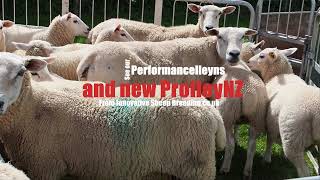How do you get your breeding sheep through the winter in the UK?
- by John Peregrine Aubrey
- •
- 21 Jan, 2021
- •
Video won't play? Click to view on YouTube or Vimeo
How do you get your breeding sheep through the winter in the UK?
If you don’t have the luxury of being a split enterprise, with your sheep only occupying a small percentage of your available acreage; you have to decide how you will over-winter your breeding sheep.
Several solutions can work, but they have different pros and cons. Outwintering on grass sheep keep is probably your cheapest alternative, but availability, location and price can be an issue. Biosecurity in this circumstance must not be ignored, as most grass utilised by sheep on winter-keep is grazed by cattle or dairy cows over the other three seasons. I am thinking predominantly of Johne’s disease which can pass from cattle to sheep and visa-versa.
Utilising catch crops on arable ground will remove the co-grazing biosecurity risks. However, it may present a new set of bio-security and even possible welfare risks. Distance is more likely to be an even more significant barrier, as an off-farm solution, and there will rarely be any permanent fencing. Electric fencing has to be the containment method and remote shepherding, welfare in possibly muddy conditions, along with proximity to other farmers sheep must be a concern.
Here at Innovative Sheep Breeding, we consider bio-security paramount, both for our customers and ourselves. So, we house our breeding sheep and feed them silage to remove the pressure off the grazing grass. We can make enough silage through the summer months for this purpose, which when ensiled in an Agbag, with a small feed face and exceptional preservation properties makes for an ideal feed for our breeding sheep. Our ewes are fed ad-lib and with a TMR feed mixer.
We shear our housed breeding ewes (about 65% to 75%). This means that those sheep do not have to be shorn again in the summer when they have lambs at foot and will also be less accessible. The sheep are also happier in the shed when shorn and only need two months regrowth before they are safe to go out into wintery weather.
The most significant disadvantage of housing breeding sheep is the expense. It is the most costly overwintering option, and as a result, this strategy needs to be frequently reviewed.
If you watch the video, you will see our breeding sheep in the shed. They are a mixture of Performancelleyns and New Zealand Suffolks and a few New Zealand Sufftexs. The New Zealand sheep are bred, as a multiplier flock for Easyrams.
Our ProlleyNZ breeding ewes are yet to make this stage of the sheep breeding cycle but will be indoors here next year, so watch out for them. We expect that they will be hard to spot, unlike the black-faced New Zealand sheep, as our intention is to breed a visually similar sheep to the Performancelleyns, but with superior on-farm performance.
So why Lleyn sheep and New Zealand sheep? We are looking to combine the best of British, with the best from the rest of the world, in a sheep breeding solution designed to make you more profitable and give you a improved sheep farming experience.

Innovative Sheep Breeding. How does the flock look?
How do our breeding sheep look?
Well, here is a video of some ewes and lambs taken on 26/05/2021.
The sheep are just about to be sprayed with fly control treatment.
The Lleyn (Performancelleyn) ewes were winter shorn and will not be summer shorn. All they need is Clik extra to carry them through the summer, which means we do not have to shear them with lambs at foot, and we do not need to get them back down the road to our buildings and the hot and bothered shearers.
The lambs are a mixture of Performancelleyns and ProlleyNZ crosses. They are an average group of sheep, not just the elite sheep. The lambs were born over 6 to 8 days and are, on average, 82 days at the time we took the video.
These sheep have been grass-fed only. Also, there had been only one period of rain in mid-march before we weighed the lambs in May.
The lambs were all weighed on 10/05/21, which would be an average of 66 days, and the average group weight was 27.25 kgs. The average daily live weight gain for the lambs was 340 grams per day since birth. The maximum daily gain was 488 grams per day. This individual weighed 40 kgs at 66 days of age and is the animal highlighted in the video with an arrow. He is a ProlleyNZ cross. These are exact figures as we record the birth date and birth weight of all these lambs.
We upload all this data to Signet Breeding Services, who process the data to get Performance figures for the individual sheep.
As any sheep farmer knows, there is a lot of variation between individuals. If you capture enough data and process that correctly, you can improve the performance and quality of your flock’s genetics. The clever thing that Signet Breeding Services would do is remove the environmental effects from the raw data.
If you want to improve the performance of your maternal/dual-purpose flock, you need to buy performance recorded stock from the best performing flocks.
We have the highest average indexed Lleyn flock in the UK and work solely on the ethos of supplying you, the commercial sheep farmer, with the best genetics to improve the profitability of your flock.
The Performancelleyns are a purebred Lleyn, while the ProlleyNZ combines our best Lleyns with the best New Zealand genetics. The ProlleyNZ combine the best of both countries advanced breeding strategies to capture hybrid genetic vigour while keeping wool levels to UK acceptable levels.
The best way to benefit from all the years of our breeding and our unique genetic position is to purchase our Performancelleyn or ProlleyNZ rams.
You can find out more on our website innovative-sheep-breeding.co.uk and enter a competition to win a shearling ProlleyNZ ram.
You will not be disappointed.

Here at Innovative Sheep Breeding, we tup all the suitable ewe lambs that we retain to put back into the flock.
As a sheep breeding enterprise, looking to produce continually improving performance, we change over a third of our breeding ewes every year. Breeding sheep from ewes lambs shortens the intergenerational interval enhancing the rate of genetic gain in our sheep.
In this video, we are moving our ewe lambs back to the shed for pregnancy scanning. We need to know which ewe lambs are pregnant and how many lambs each sheep will give birth to.
There are three classes of ewe lamb in this video. There are our performance recorded Lleyn ewe lambs, which we call our Performancelleyns.
There are ProlleyNZ ewe lambs. These are our composite sheep, a combination of our superior Performancelleyns and elite New Zealand maternal sheep.
Also, there are New Zealand Suffolk and Sufftex ewe lambs, which are more terminal in nature but can be used very successfully in maternal sheep breeding.
An interesting point is you cannot tell the difference visually between the Performancelleyns and the ProlleyNZ ewe lambs. Lleyn sheep and the composite sheep. Which means we should be avoiding any problems in the variation of physical characteristics. An issue that Innovis have had with some of their composite sheep.
The ideal scenario would be that from every ewe lamb put to the tup/ram we would get a pregnant ewe lamb with a single lamb. However, it does not work like this, unfortunately. Mated ewe lambs will not all get pregnant, and many will have twins.
The question is always how to manage those extra lambs. You can remove them and hand-rear them, but that tends to create work and no profit unless fat lamb prices are very high. So, I favour letting the ewe lambs rear doubles but carefully managing them. Nutrition and worm burden being the main areas of concern
At Innovative Sheep Breeding, we favour mating ewe lambs for our customers, as long as they are big enough to tup and they can be managed correctly. Lambed ewe lambs make far better mothers as shearlings, and it is more profitable than waiting for the second year. Just remember management is the key to success.
There is a helpful series of articles from the AHDB about sheep breeding and ewe lambs here. There is a series of links to articles on breeding ewe lambs at the bottom of the page.
We have Lleyn ewe lambs for sale in September, and we may have ProlleyNZ ewe lambs in the future. So, contact us early as they are highly sought after.
However, the shearling Performancelleyn rams and the ProlleyNZ rams we sell, offer a better value solution if you can retain your breeding sheep.









